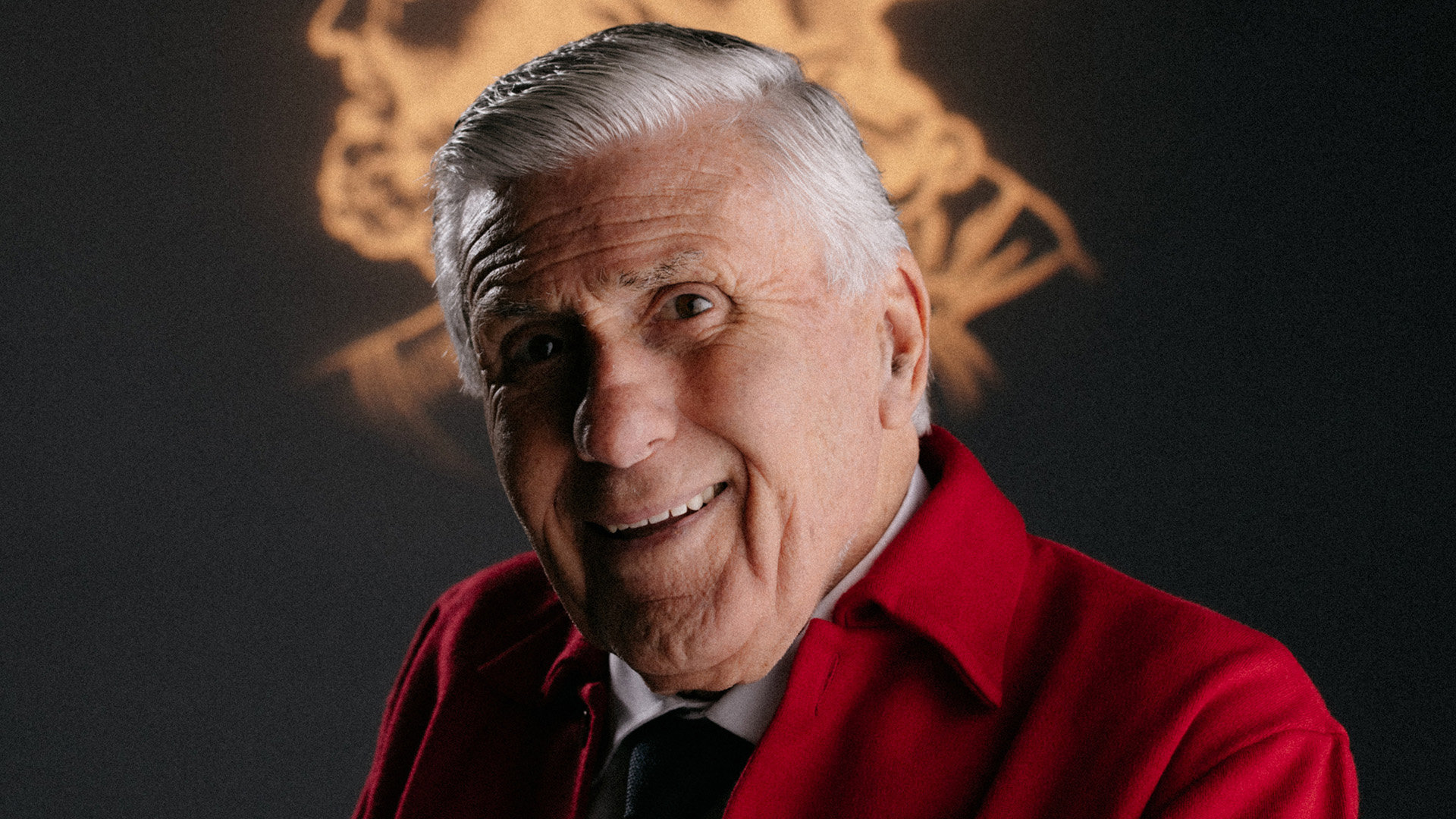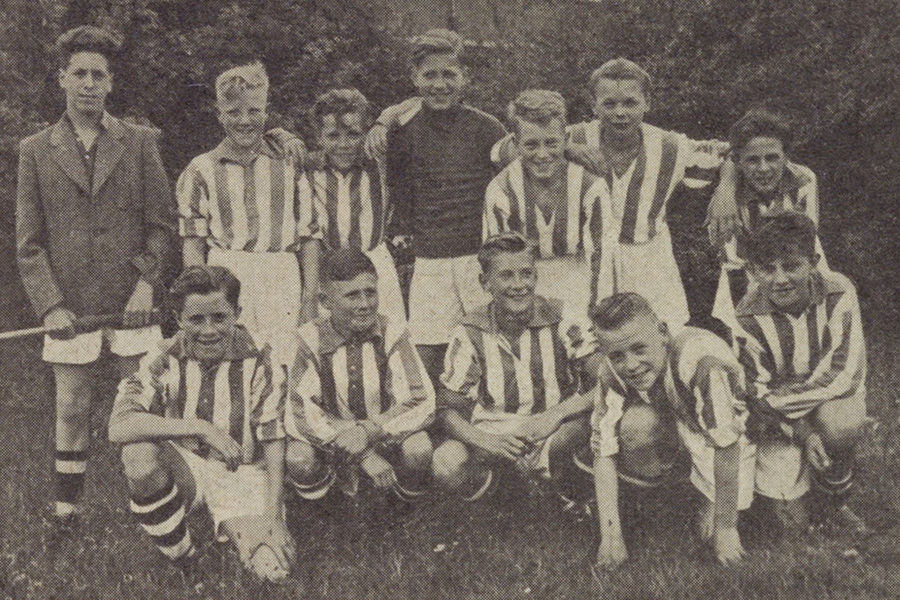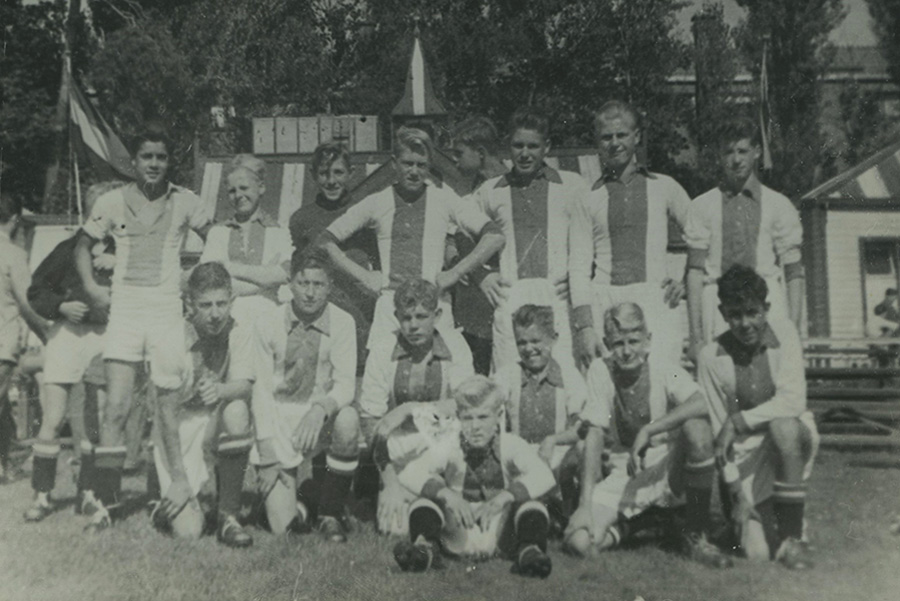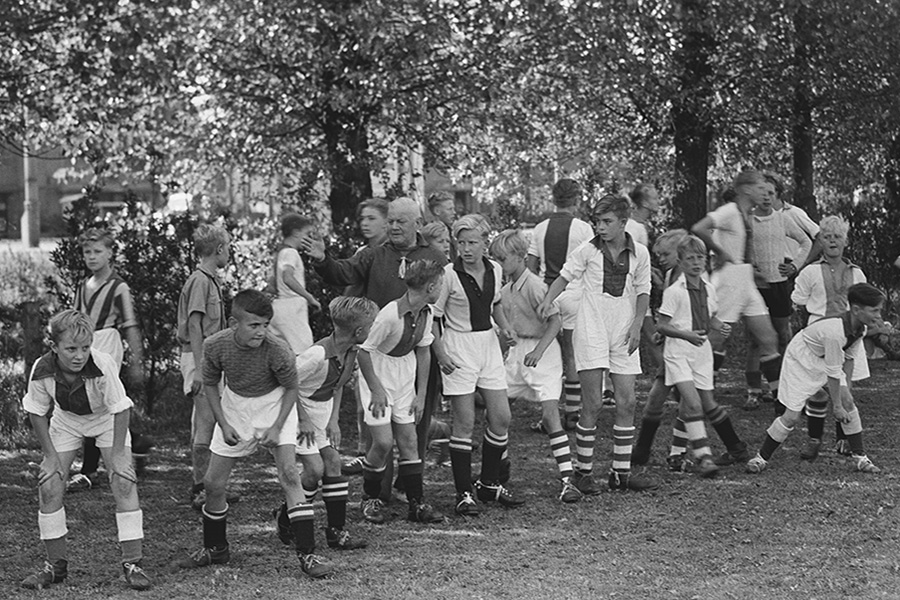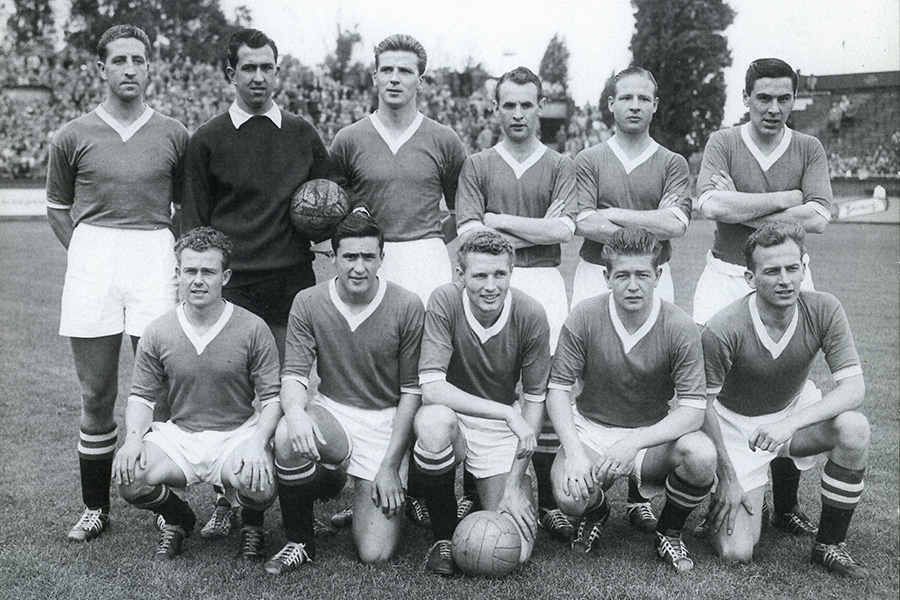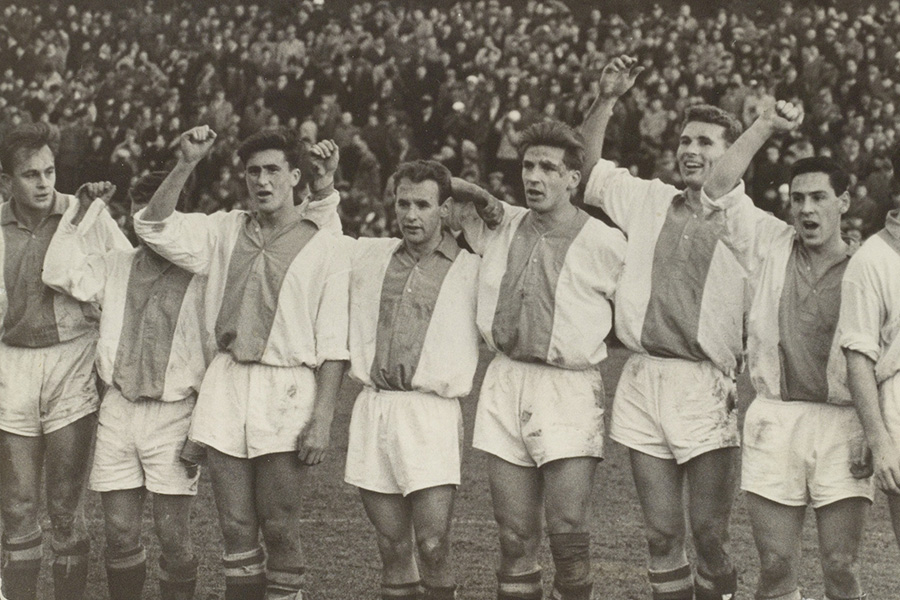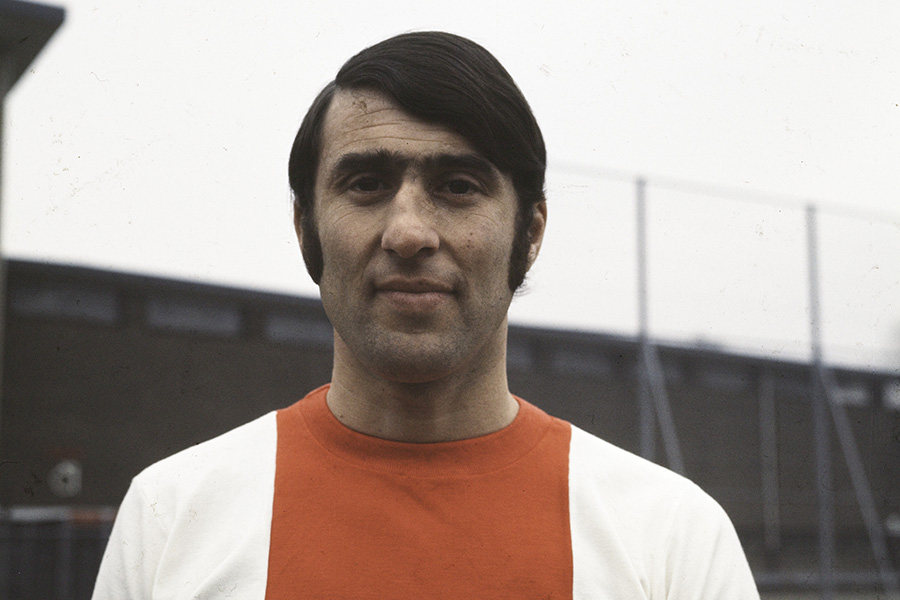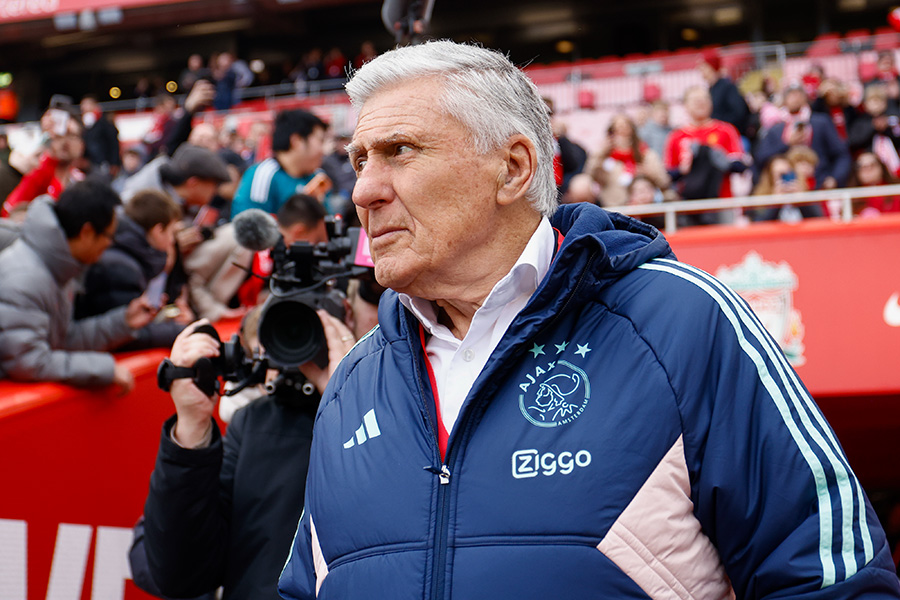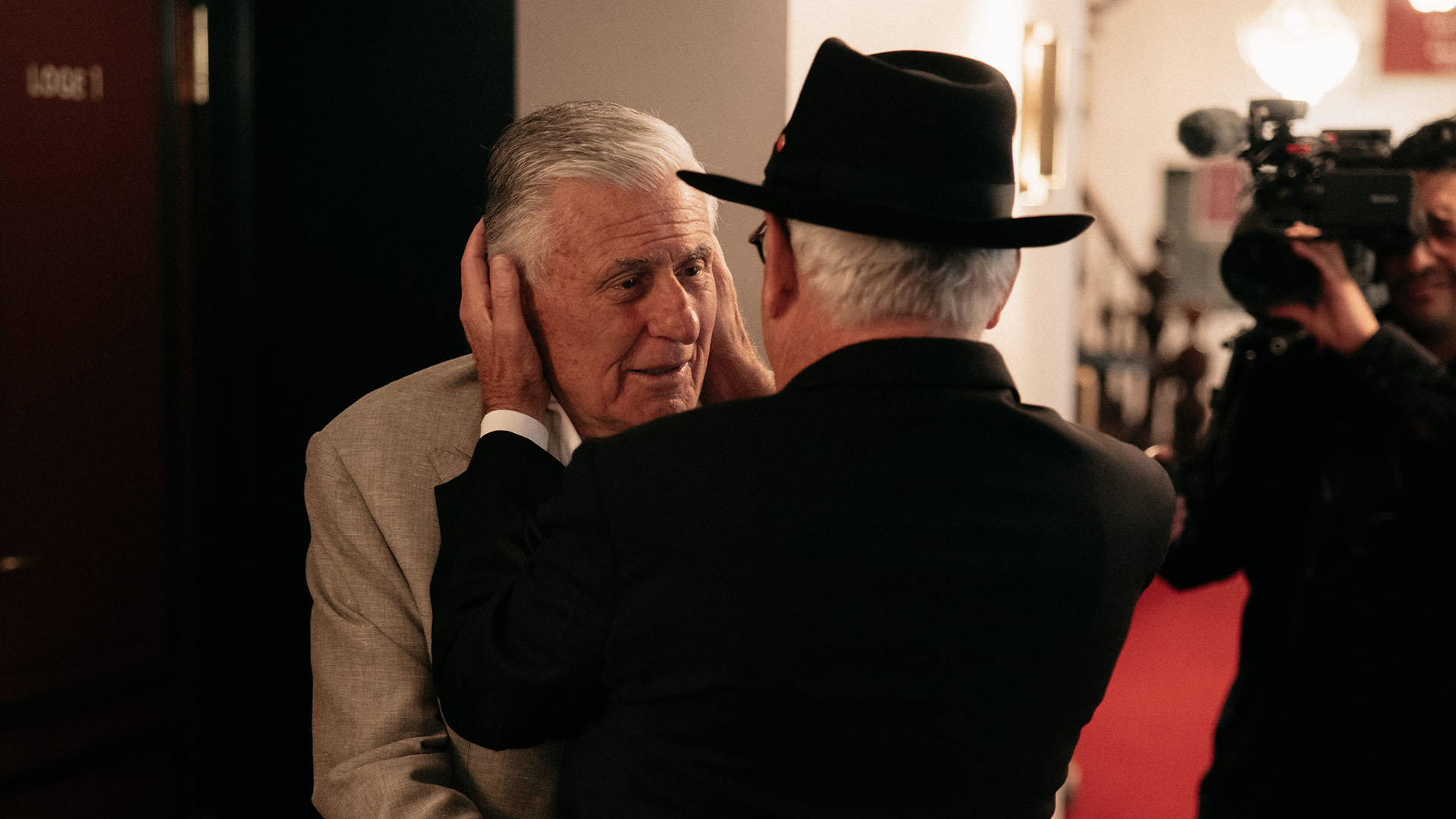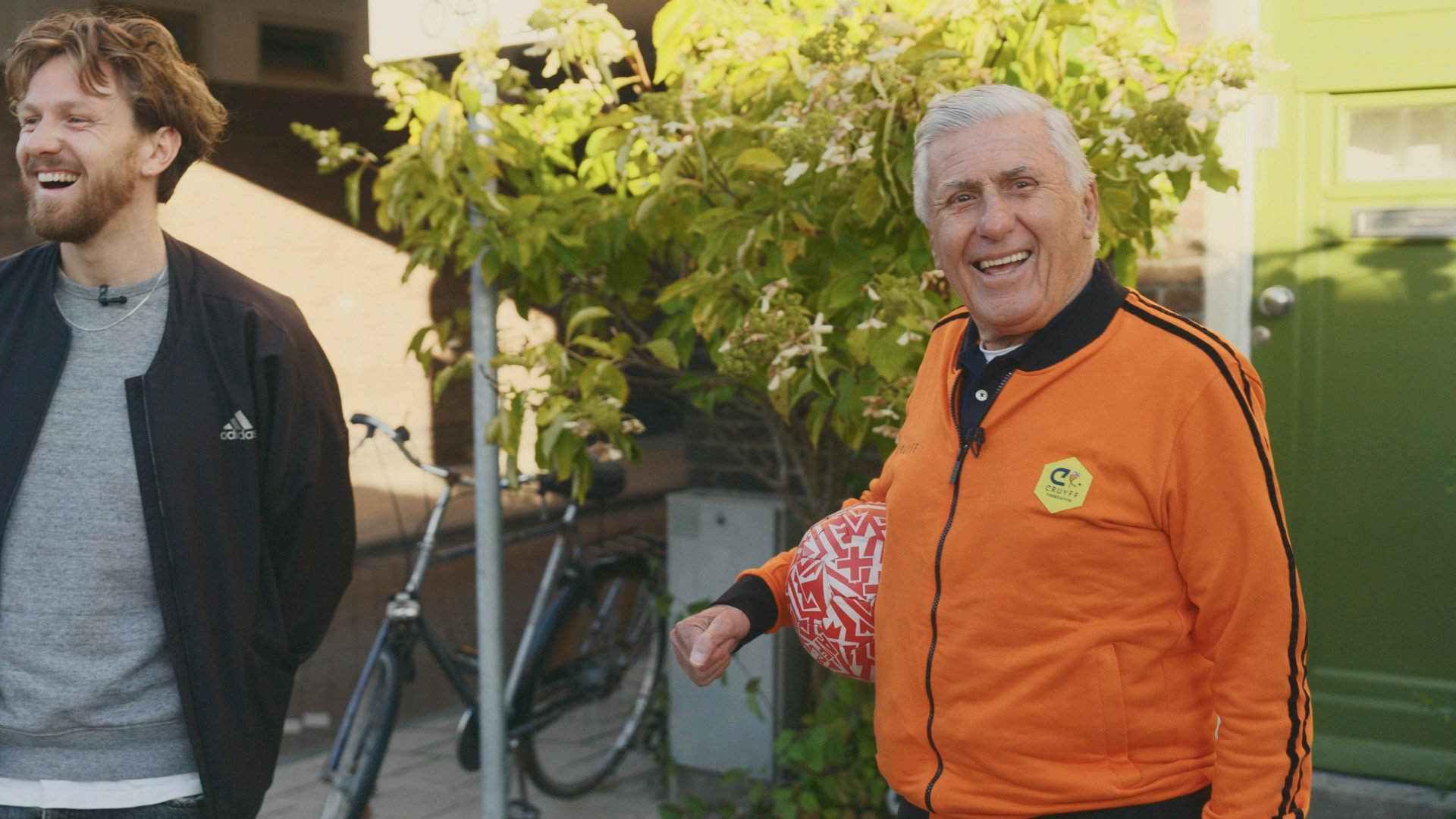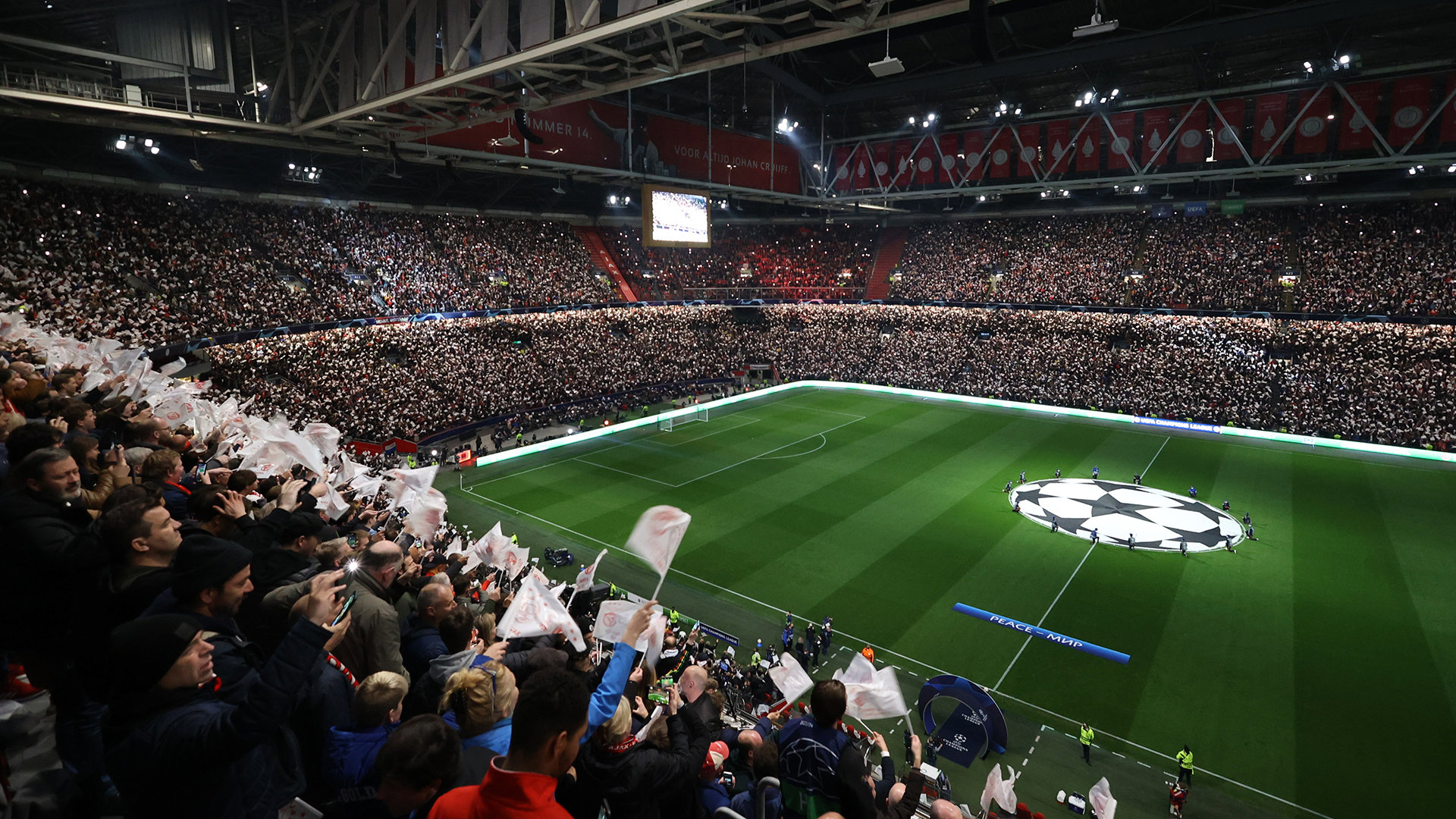In 2025, it is difficult to imagine, but there was once a time when Ajax and Swart were not yet connected. That remained the case until 1950. Since then, so much has changed that the club and Swart have long formed an unbreakable unity. The story of how that bond came about and grew stronger over the years can be read and seen in detail by Ajax fans.
But what was the foundation, what was Sjaak’s life like before Ajax scouted him, and took him on as a youth player? And how were his years in the academy? Those earliest chapters have often been somewhat overlooked, overshadowed as they are by the triumphs he enjoyed as a player for Ajax 1. All the more reason for a reconstruction of the boyhood and youth years of Mister Ajax, told in his own words or vividly described by his biographers.
A blank page
Back to the 1940s, to the grey footballing years just after the Second World War. As a footballing nation, the Netherlands counted for very little, and the same could be said of Ajax as a club. Nationally, Ajax was a respected association with eight league titles to its name. But internationally, the club was still a blank page, largely unknown halfway through the twentieth century.
‘Sjakie’ was already a regular visitor to the stands at De Meer during those post-war years. His father, Louis, was football-mad and would take his son, born on July 3, 1938, on the back of his moped to Ajax’s home matches from the time the boy was six. In the cosy brick stadium in Watergraafsmeer, Guus Dräger was a favourite.
From their standing place behind the goal, father and son Swart enjoyed the winger, who could show his skills on both the left and the right. They always positioned themselves on the side where Dräger was playing, drinking in his graceful movement, smooth stride, and perfect cross. He was talented, effective, and good-looking, too.‘Together they stood behind the goal, because the view was so good and because they loved the sound of the ball hitting the net,’ writes biographer Raymond Bouwman in Mister Ajax. ‘And perhaps also because those were the cheapest places.’
Imagination
At the time, Ajax, with stalwarts such as Jan Potharst, Gerrit Keizer, Joop Stoffelen and Gerrit Fischer, set the young Swart’s imagination racing. One day, he wanted to play for that wonderful club himself. Ajax was a team of Amsterdammers, and he felt he belonged there.Although born in Muiden, Swart moved to Amsterdam when he was one. From an early age, he dedicated every spare moment to developing his footballing talent.
Little Sjaak was obsessed with the game. In the Reinwardtstraat and Pontanusstraat in the Dapperbuurt, everyone knew the inseparable bond between the young footballer and his ball. Wherever Swart went, the ball went too.The Swart family lived at Reinwardtstraat 116; later, Barry Hulshoff would live diagonally opposite. "Before school, at break, after school, and in the evenings, I was always playing football", Swart told Ajax Media about his youth. "I lived close to Amsterdam Muiderpoort station. Under the station, there was a road. There was a goalkeeper living on my street. I’d take him along and we’d do shooting practice, from every angle and distance. Every single day."
Street football honed his technique. His iron will to win and his eye for goal soon made the small dribbler a noticeable talent. Swart played his very first match for TDW Centrum in Duivendrecht. His stay at Training Doet Winnen was brief: after just one match, he moved to OVVO, his father’s club. Yet as a TDW player, he appeared alongside Bennie Muller, the beginning of a lifelong friendship. The two would later share the Ajax 1 dressing room.
Swart divided his time between the club and the street, where ‘put football’ and neighbourhood matches were played. "If it was light in the evening, we played in the street. Everyone would hang out of their windows watching us," Sjaak recalled in Mister Ajax.
A snapshot of the times
Returning to his old neighbourhood for his biography, Bouwman paints a vivid picture. “I could juggle the ball with my head all the way down the street. People loved it. They’d shout: ‘Go on, Sjakie, keep it up!’ You were always practising. Outside, but inside too, in the hallway. My mother wasn’t too pleased, but my father and I just carried on. We’d both get told off. I often got a whack with the carpet-beater when I went off to play football instead of doing the shopping. (…) That carpet-beater was necessary now and then, because I had no brakes. (…) I was a rascal, a cheeky lad, but a nice one.”
Inside or outside, Louis would often take the time to train his son. Whenever possible, he worked with Sjaak on passing and shooting. Louis himself had been a very technical right winger at the amateur level.
The school of hard knocks
The lessons from his father, combined with countless street matches, soon bore fruit. A match against Ajax youth players paved the way to De Meer and Voorland, the training ground behind the stadium. OVVO were far too strong for the Ajax boys, winning 7–0, with Swart scoring five. “I was small, but I could shoot really hard. (…) I remember it clearly. Mr Muller, a member of Ajax’s board, was watching. He asked whether I wanted to play for Ajax. My father and I were honoured, but I still had to do a trial.”
At an open trial, around fifty hopefuls turned up. Only two were taken on; Sjaak was one of them. He was in seventh heaven, and his father was just as proud. As a birthday present, Swart received his first Ajax kit.
A difficult start
Yet his start at Ajax was not easy, overshadowed by personal tragedy. Two days after his birthday, his mother, Nel, only 39 years old, died after a long illness. It was just before her death that she had given him his first Ajax kit. That turned out to be their final contact. The loss cast a dark shadow over his pride at being an Ajax player and had a lasting effect on his life and career. Football became ‘a maniacal devotion’, writes Bouwman: ‘as though he wanted to play his whole life in an Ajax shirt to honour his mother.’
Swart sought solace in football. At his dream club, his very first trainer was none other than Jack Reynolds, the legendary Englishman who had shaped Ajax’s youth academy. Reynolds trained all Ajax teams, young and old, and took particular delight in polishing the raw talent of the budding right-winger.
Recognition
At a time when Ajax still played with five forwards, Swart stood out quickly. Within half a year, he made his first appearance in the club magazine Ajax-Nieuws. In April 1951, columnist BROWN reported on an aspirant’s match against AFC: “A fine goal by our right winger secured a 0–1 victory. Swart, Bartelsman, Dukker, Nijhuis, van der Maas and Bos, a feather in your cap. Jackie mustn’t dribble too much, though. It just wastes time, boy, and football is a team game.”
Swart often played with and against older boys, developing fast. “I went through all the youth teams, and we were always champions,” he recalled on Ajax.nl. Initially an inside forward, he would become a pure right winger, especially after making his first-team debut.
School days
The higher he climbed, the more football dominated his life. School increasingly fell by the wayside. At the Van Deventer Mulo, Sjaak could not keep his mind on lessons. “I wanted only one thing: to be a footballer. School didn’t interest me,” he said later. In the third year, he left school, taking jobs as a fish seller and in an office.
Outside Ajax’s sessions, he also trained himself. At the athletics club Sagitta near the Olympic Stadium, he improved his sprinting and jumping.
A golden youth
Looking back, Swart is grateful for his academy years. “I had a wonderful time. The training was already good then, although not as intense as today. In the A1, we trained twice a week; now they train six or seven times. Physically, it’s all much better today, but technically? I’m not sure. We spent the whole day playing with a ball. Kids can no longer play endlessly in the street with a small ball like we did. (…) Back then, you had to bring your own kit; now everything is laid out for them.”
His hard work and iron will paid off. Six years after joining the academy, he made his Ajax 1 debut. On September 16, 1956, aged eighteen, he played a full cup match against Stormvogels, scoring in a 3–2 win.
First contract
Around the same time, he signed his first contract. Wages sound quaint today: forty guilders for a win, twenty for a draw, nothing for a loss, and five for a training session. “That I was paid at all for playing was almost too good to be true. To play for Ajax and get money for it as well!” he recalled in the jubilee book Ajax 1900–2000.
With Swart on the side, Ajax rose to the national and then global stage. After the golden 1930s, the 1970s became platinum years, and Ajax conquered the world. Swart’s honours include three European Cups, a World Club Cup, eight league titles, and five domestic cups.
Even after retiring in 1973, Swart remained loyal to his club. In 2010, he was made an honorary member, joining a select group of Ajacieden. He remains forever proud of his club and his career, and perhaps above all of his life as Mister Ajax. As he put it, in his own inimitable style, in Sjaak 80: “To have had a career like mine, and to be as loved as I am, well, you can’t ask for more.”
